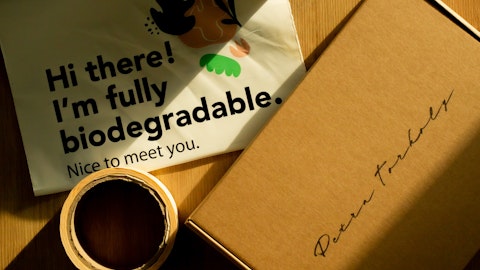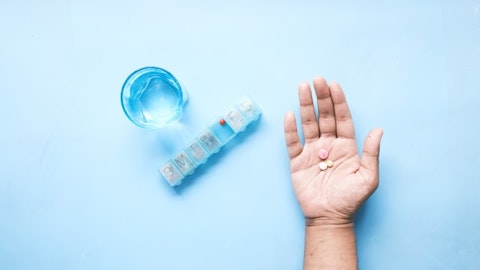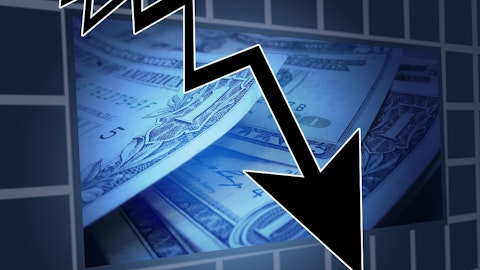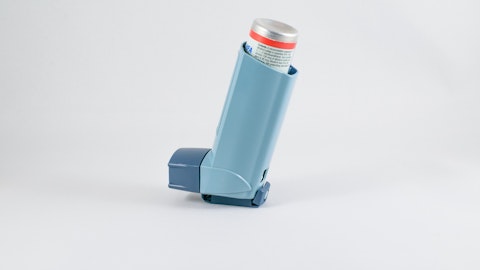Gabe Hajde: Stephan, Bob, Mary, good morning. Maybe just to dial in a little bit — saying give and take a mile. In the Pharma segment can you just remind us I think there was around, if we include start-up costs $25 million of ERP and start-up in 2023. Does this all go away next year? And then should we also assume contribution from the growth that we will get in injectables or anything else that we need to be mindful of? And then given the I guess the — maybe a little bit more rich mix of Rx versus some of the other elements within Pharma would you expect I guess moderation adjusting for those other start-up costs in ERP in profitability in Pharma, or how should we think about that?
Stephan Tanda: Yeah. I mean, on the first question clearly the ERP cost especially in the first two quarters and especially in the first quarter will not repeat. Now, we continue to build out the Granville two factory and that will have equipment and trial productions and labor presence and no revenue for that. So we will continue to have if you want start-up track we don’t quantify it yet. We’ll probably give that when we do Q4. It will be a bit less but still there will be something next year. But compared to the ERP cost it’s obviously much smaller. Then on your mix question yes if injectables and active materials grow much faster compared to Rx and CHC you will have a negative mix effect. On the other side, as we just said you will have costs that go away with the ERP system. So we’re not going to give you the end result of that in advance here as it plays out plus we have cost work again across the board to do. I don’t know Bob if you want to add anything.
Bob Kuhn: Yes. The only thing I would say is I think Gabe our number on the injectables ERP and start-up costs for the year is probably closer to $20 million and I think you mentioned $25 million and we’ll have another couple of pennies or $2 million $2 million to $3 million in Q4 of this year.
Gabe Hajde: Okay. And then switching gears, I guess to redeployment and/or cash generation. I think you talked about CapEx starting to migrate back closer to D&A. I just want to kind of confirm that. And then as you look across — I mean, our model has been shaking out around 1.4, 1.5 times levered at the end of this year. Anything in terms of the M&A pipeline that we should be thinking about, or would the preferred avenue be kind of dividend and repo as we look into 2024 and beyond.
Bob Kuhn: So we’re still a little bit above Gabe on the CapEx. So for the quarter we spent about $76 million. Most of the amount above the D&A which is about $63 million in the quarter is really coming from the run-out of the three big projects primarily the injectables expansion.
Stephan Tanda: And I would say obviously you see the growth that we have in Pharma. Those are not — we will continue to make sure that we have capacity available especially in life-saving medicines. We will not expand capacity to get to certain CapEx numbers especially in these areas that go double digit at the moment.
Bob Kuhn: Yes. And then I think on your comment on the deleveraging by year-end so we’re about 1.6 so we were able to take it down from the 1.8 that we were and that’s primarily due to a really strong cash generation — free cash flow generation in the quarter which was about $97 million compared to $55 million last year in the third quarter. So year-to-date we’re about $124 million, and again, we’re continuing to focus on working capital as well as the margin improvement that you’ve seen in Q3.



